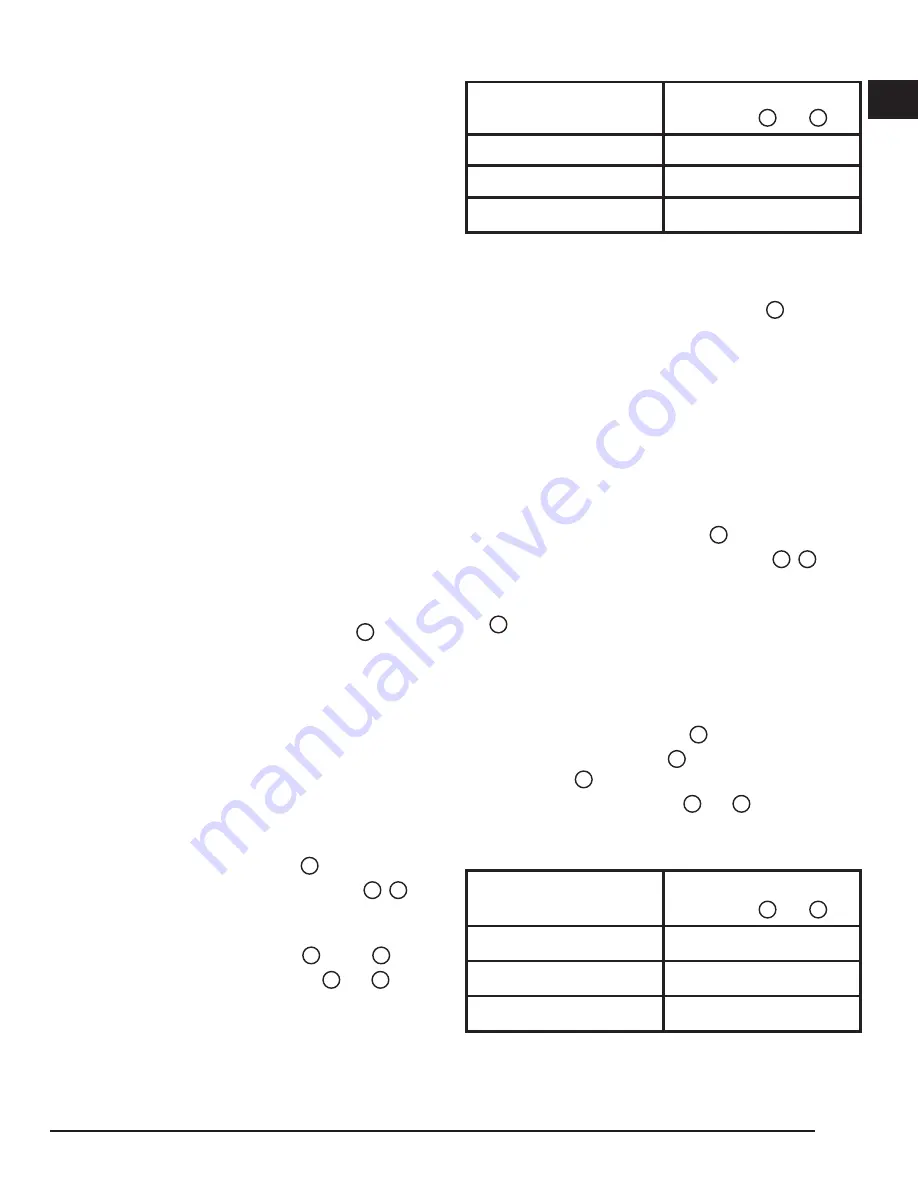
11
GB
Maintenance
• To maintain the accuracy of your work, check the laser often
to make sure it is properly calibrated. See Field Calibration
Check.
• Calibration checks and other maintenance repairs may be
performed by DeWALT service centers.
• When not in use, store the laser in the kit box provided. Do
not store your laser at temperatures below -20 ˚C (-5 ˚F ) or
above 60 ˚C (140 ˚F).
• Do not store your laser in the kit box if the laser is wet.
The laser should be dried first with a soft dry cloth prior to
storage.
Cleaning
Exterior plastic parts may be cleaned with a damp cloth.
Although these parts are solvent resistant, NEVER use
solvents. Use a soft, dry cloth to remove moisture from the tool
before storage.
Accuracy Check and
Calibration
Checking Accuracy –
Horizontal Beam - Scan Direction (See figure
7
)
Checking the horizontal scan calibration of the laser requires
two walls 9m (30’) apart. It is important to conduct a calibration
check using a distance no shorter than the distance of the
applications for which the tool will be used.
1. Place the laser on a smooth, flat, stable surface that is
level in both directions, with the laser facing straight ahead
toward the opposing wall (0 degree position).
2. Turn on the laser’s horizontal beam and pivot the laser
toward the opposite end of the wall and approximately
parallel to the adjacent wall (Figure
7
#1).
3. Mark the center of the beam at two locations (
a
,
b
) at
least 30’ (9m) apart.
4. Pivot the laser 180
º
on the bracket, and mark the horizontal
beam position on the opposing wall
c
(Figure
7
#2).
5. Measure the vertical distance between
b
and
c
. If the
measurement is greater than the values shown below, the
laser must be serviced at an authorized service center.
Distance Between Walls
Allowable Distance
Between
b
and
c
9 m (30’)
6.0 mm (1/4”)
12 m (40’)
8.0 mm (5/16”)
15 m (50’)
10.0 mm (13/32”)
6. Rotate the laser 90
º
and repeat the test.
Checking Accuracy –
Horizontal Beam - Pitch Direction (See figure
8
)
Checking the horizontal pitch calibration of the laser
requires a single wall at least 30’ (9m) long. It is important
to conduct a calibration check using a distance no shorter
than the distance of the applications for which the tool
will be used.
1. Place the laser on a smooth, flat, stable surface that is level
in both directions and against the end of a 30’ (9m) wall.
2. Turn on the laser’s horizontal beam and pivot the laser
toward the opposite end of the wall and approximately
parallel to the adjacent wall (Figure
8
#1).
3. Mark the center of the beam at two locations (
a
,
b
) at
least 30’ (9m) apart.
4. Reposition the laser to the opposite end of the wall (Figure
8
#2).
5. Turn on the laser’s horizontal beam and pivot the laser back
toward the first end of the wall and approximately parallel to
the adjacent wall.
6. Adjust the height of the laser so that the center of the beam
is aligned with the nearest mark
b
.
7. Mark the center of the beam
c
directly above or below the
farthest mark
a
.
8. Measure the distance between
a
and
c
. If the
measurement is greater than the values shown below, the
laser must be serviced at an authorized service center.
Distance Between Walls
Allowable Distance
Between
a
and
c
9 m (30’)
6.0 mm (1/4”)
12 m (40’)
8.0 mm (5/16”)
15 m (50’)
10.0 mm (13/32”)
Summary of Contents for DCE089G
Page 2: ......
Page 3: ...1 c b a b c 2 a b a 30 9m _ 1 2 a b c b a c 30 9m _ c a c b ...
Page 4: ...Figures 4 9 g h e f d c d c a b c g b a 1 2 3 2 h d 8 2 5m _ ...
Page 5: ...5 10 1 90 3 2 a a a f b c a f c b c e e 14 4m _ 14 4m _ 14 4m _ b ...
Page 6: ...Notes ...
Page 15: ...15 GB Notes ...
Page 34: ...34 F Remarques ...
Page 79: ...79 DK Bemærkninger ...
Page 88: ...88 SE Noteringar ...
Page 97: ...97 FIN Huomautuksia ...
Page 106: ...106 NO Merknader ...
Page 125: ...Σημειώσεις ...

































